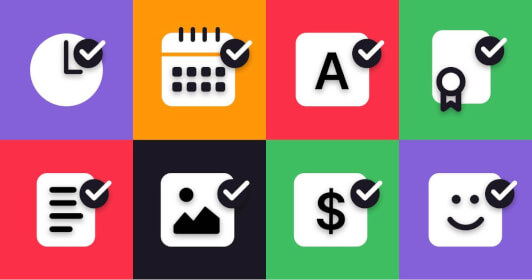Want your app to reach potential customers around the world? Then localization is crucial. Not only does localization ensure your content is accessible to more users, it makes your brand more relatable and relevant, helping you nurture a real sense of connection that will set you apart from your competitors.
Localization testing examples that generated enormous success from well-known organizations include the following:
The video streaming app provides a localized subscription payment model, altered dialogues, subtitles, and much more. The company also invests heavily in regional content.
The global drinks brand connects with local communities via its marketing campaigns, eg: printing local names and phrases on bottles and cans.
The delivery food service app provides an interface which correlates with the cultures of its global cuisines, creating a consistent and inclusive user experience.
The games manufacturer creates and localizes its games simultaneously. This ensures consistency between the native and localized versions of the game and helps to maintain high standards across the board.
While localization is key to reaching a wide range of audiences, testing your localized content is just as important if you want to guarantee quality products in every target market. Localization testing provides valuable help in a number of ways:
Reveals any bugs and errors
Helps ensure design and number elements align with those of the target audience
Reveals when cultural elements like colors and symbols don’t match with local customs
Supports consistency with the original version of the app
Creates an opportunity to get feedback from real users
In this article, we’ll be delving into all aspects of localization testing and guiding you through the process so that you can be sure your app meets the needs of your global audience.
What is localization testing?
Localization testing is the process of verifying that a product is accurately adapted for a specific locale. It ensures that all cultural, linguistic, and regional aspects are correctly implemented. This helps ensure maximized understanding and engagement with a country- or region-specific audience in a specific language.
How to automate localization testing with Smartcat in 10 steps
Automation tools for localization testing with Smartcat streamline the process, making it substantially more efficient, precise, and consistent, and much less labor-intensive. Follow these 10 steps with Smartcat for automated testing success.
1. Set up your localization project
Create a new software localization project in Smartcat, specifying your source and target languages and choose your workflow.
2. Integrate with your development environment
Use Smartcat's API or integration options to connect Smartcat to your tech stack, ensuring seamless updates and file transfers between systems.
3. Use automated translation
Leverage Smartcat AI translation to generate initial high-quality translations quickly, which can then be refined by human localization expert reviewers.
4. Enable continuous localization
Set up continuous localization workflows that automatically pull new content from your repositories and push translated content back, maintaining an up-to-date localized version.
5. Assign roles and permissions
Define roles for developers, linguistic reviewers, and quality assurance managers within Smartcat, ensuring everyone has the appropriate access and responsibilities for their tasks.
6. Use Smartcat translation memory for always-improving results
Employ Smartcat's translation memory to reuse previously translated content and update existing content in real time, enhancing consistency and reducing human workload.
7. Implement automated quality checks
Configure Smartcat's built-in quality assurance and testing tools to automatically check for common errors, such as untranslated segments, formatting issues, and terminology inconsistencies.
8. Collaborate in real time
Facilitate real-time collaboration between your team members, allowing instant feedback and corrections. Smartcat operates an unlimited seats model, meaning you can invite as many coworkers or external collaborators as you want.
9. Test localized versions
Use Smartcat's comprehensive testing features to preview how translations appear in the actual software environment, ensuring optimal layout and performance.
10. Monitor progress and performance
Track the progress of your localization projects and the performance of your team members using Smartcat's reporting and analytics tools.
Localization in software testing: Ensuring cultural and functional accuracy
A software localization testing process ensures that an app has been accurately adapted for use in a particular country, area, or region. It’s designed to check that the product makes total sense on functional, linguistic, and cultural levels for the target audience. It is a critical requirement to guarantee that the software meets the end-user interface needs in the target location.
During the localization testing process, best practice questions to ask may include the following.
Does the appearance of the localized software correlate with the original version?
Are all interface elements translated correctly?
Is the interface displayed correctly on different devices?
Are the fonts and font sizes consistent throughout all language versions?
Are the dates, number format, currency, measuring units, etc. adapted to the local culture?
Is your app compatible with the devices used locally?
Have help resources and documents, placeholders, internal links, etc. been translated?
Is the content free of errors and translated appropriately?
As you can see, localization testing strategies for software launches and updates require translation precision, cultural knowledge, and software testing capabilities. AI can accelerate localization testing performance, but there is also a crucial human-in-the-loop requirement. Typically, testing of software for each target market requires developers, linguistic reviewers with intimate knowledge of the target market, both linguistically and culturally, and quality assurance managers, among other roles.
With Smartcat’s streamlined product localization workflow, you can make use of a single platform that optimizes AI human collaboration, centralizes all localization-related projects, and provides a single workspace for all your team to work together in real time.
Localization testing flow with the three D’s of app creation
In its simplest form, localization testing involves the three D’s of app creation: design, development, and delivery. But instead of creating new content and functionality from scratch, you work with translations and adapted features.
The process involves creating test cases, reporting problems, fixing them, and retesting the product as many times as necessary until it’s perfect. Let’s take a closer look.
Localization testing checklist: 3 steps for global multilingual success
Follow these three steps to maximize your international communications success. From marketing and sales to product and L&D, adhering to three-step checklist will position your department for optimal multilingual performance.
Design
The main goal at this stage is to ensure that you’ve done your internationalization right. This means making sure that the interface of your product is designed in such a way that it accommodates different languages without any issues.
This is done on the front end, so the focus should be on elements like images, dialog boxes, toolbars, menus, and dynamic content (e.g. pop-ups).
Test case creation tips:
Try to use the extended character sets (not the ASCII) where input and output are expected to make sure the text is displayed correctly. These can be DOS, Unix, or HR printer sets.
Set your development environment to derive data from user preferences to ensure dates, times, etc. are correctly formatted.
Leverage pseudo-localization results to find potentially problematic areas.
Design testing is the first and possibly easiest step in the localization testing workflow as it mostly requires the efforts of the design and development team with minimal intervention from the localization manager.
Development
This step focuses on how well your product works in another country, irrespective of the language. It covers both frontend and backend aspects such as usability and interoperability.
Test case creation tips:
Check the product is stable after it’s been localized.
Make sure that any older versions of the product still operate as expected when localized.
Try upgrading/downgrading/installing/uninstalling the local versions of the product on different devices.
At this stage, testing is still done mostly with the design and development team and requires little external coordination.
Delivery
The last step is the most important as it can easily undermine all previously successful testing. When we say delivery, we mostly mean linguistic and cultural aspects, such as grammar and spelling, as well as ensuring the app’s content is respectful of local traditions and norms.
From a technical point of view, this step is easier than the previous ones. However, its simplicity can be deceptive as any translation mistakes can roll the whole process back to Step 2 or even Step 1.
Test case creation tips:
Try to involve locals in the testing at this stage as they can catch any inconsistencies you might have overlooked.
Hire a professional to post-edit and approve your translations. Smartcat’s marketplace of more than 500,00 professional linguists uses an AI-matching algorithm to assign you to an individual who is best placed to meet your language needs.
Double-check your text segmentation to ensure the translated segments match when the localized text is assembled.
This step requires the efforts of your internal localization team and proofreading from professional linguists.
Knowing when to strike: Mastering the localization testing triangle
A key problem of localization testing is knowing when to do it: should you start the process before, during, or after app development?
If you localize and test your content before the product is developed you have no way of seeing how well the app and its content go together. If you do the localization and testing after the product is developed, you risk taking the whole development process several steps back if and when any issues are found.
For example, if a linguist detects a poorly translated piece of content, this will have to be sent back for translation, approval, and another review. Additionally, the development team will have to extract the faulty string and replace it with the correct one. This significantly increases the number of tasks to complete and the risk of human error.
So, what’s best? The answer is continuous localization. When localization is continuous, it lets you run your testing in parallel with implementation and design as well as automating the process of checking for and fixing any linguistic issues.
Smartcat Integrations lets you automate content exchanges between the CMS or any design or developer tools you use. This means that Smartcat automatically pulls the text to translate out of your system (e.g. WordPress, Figma, or Google Docs), corrects and approves the translations, and sends them back without any extra effort required from your team. This significantly smooths the process of localization testing for apps, saves you from updating translations, and eliminates the need for you to juggle multiple source files and strings. Whether you choose integrations with manual synchronization, real-time translation via an API, or integrations with full automation support, you can be sure to save yourself costly mistakes over the long term.
For more insights and information on localization, translation, and reaching global audiences with your app, read more guides and how-to insider articleshead back to on the Smartcat blog.
Subscribe to our newsletter


